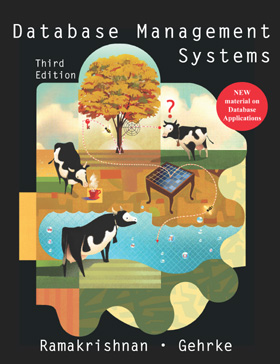
Database Management Systems has quickly become one of
the leading texts for database courses, known for its practical emphasis and
comprehensive coverage. The third edition features new material on database
application development, with a focus on Internet applications. The hands-on
approach introduces students to current standards, including JDBC, XML, and
3-tier application architectures. A new, flexible organization allows
instructors to teach either an applications-oriented course or an introductory
systems-oriented course. The revised
“part” organization with (new) Overview
chapters makes it easy to select the chapters you need; in-depth chapters
within each part can be optional.
This very current
new edition also features pedagogical improvements (e.g., chapter objectives,
review questions), and updated and extended
discussions of data mining, database tuning wizards, decision support,
information retrieval, Internet security, object-oriented databases, transaction
processing, and XML data management. Throughout, the coverage has been revised
and expanded to reflect the new SQL:1999 standard, including extensions that
support multimedia data, object-relational databases, OLAP, recursive queries, spatial data, and SQL-J.
The flexible organization and up-to-date discussion of advanced topics also
makes the book ideal for use in a two-course sequence.
More about the book's
organization.

News (latest update: January 2007)
- There was a problem with the pages that permitted you to request
material for instructors. If you submitted a request recently, please
re-submit it so that we can help you get access to the material!

Online material

If you have further questions, contact
Raghu Ramakrishnan at Wisconsin or Johannes Gehrke at
Cornell. If you are an instructor, you can request a
FREE SAMPLE
COPY. If you are using the book and have found bugs or typos, or want to
comment on the presentation or content, please send email.
Raghu
Ramakrishnan (raghu@cs.wisc.edu) and
Johannes Gehrke (johannes@cs.cornell.edu),
August 2002.
 |

![]()